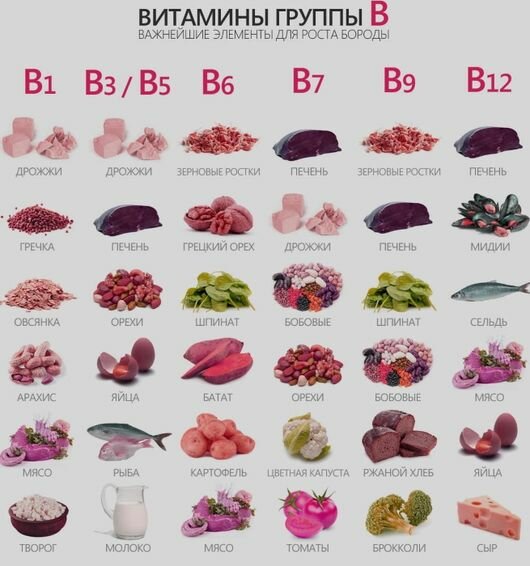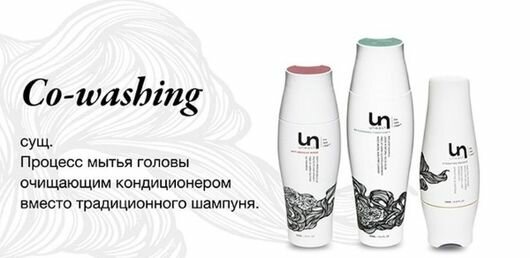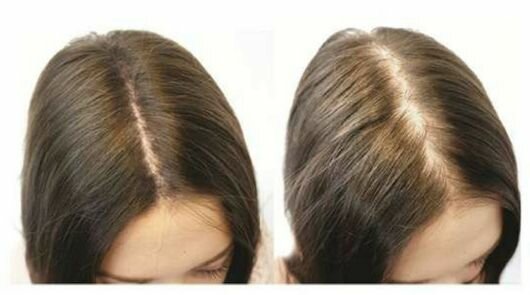Dyeing rods is a modern technique for coloring hair, which is also called French highlighting. Photos before and after the shuttles session clearly demonstrate all the advantages of the method.
- Features of the painting technique
- Who is suitable for painting stencils
- Factors affecting the choice of equipment: length, structure, density of hair
- Advantages of technology
- disadvantages
- The choice of shade for brown hair
- The choice of shade for dark and black hair
- The choice of shade for blonde hair
- The choice of shade for red hair
- Shatush for long and short hair: differences in coloring
- Tool preparation
- Stain preparation
- Step-by-step instructions for dyeing hair at home
- Hair dyeing steps
- Step-by-step dyeing without fleece
- What to do with a bang
- What is the difference between shatush technique from highlighting, balayazh and ombre
- Video about hair dyeing with the shatushi technique
Features of the painting technique
The word “shahtoosh” in translation from English means “goat fluff”, or rather, expensive wool of a special breed of goats, which is extraordinarily soft.
The method of painting shatushi was invented by the Italian stylist Aldo Coppola, who owns a network of world famous beauty salons. At first, coloring was available only to celebrities and Hollywood actresses, which reflected the belonging to the luxury, elite class.
The second name of the method is French highlighting. Shatush received it because of the special love of French women for this type of staining. French women are known for their ability to look stylish in any situation, so they appreciated the technique for giving the image a special chic. 

The main peculiarity of painting shatushi is the effect of strands burnt out in the sun.
It is created due to the soft transition of tones from the roots to the tips with the clarification of the latter. When staining, tinting compositions are used that are close in shade to the natural color of the hair to give them a natural look. This method is called color stretching.
Who is suitable for painting stencils
Shatush is a universal coloring technique that will suit almost every woman. Staining will give a zest to young girls and emphasize the natural beauty, while older women will add charm and elegance.
Dyeing on long hair and haircuts on the shoulders, such as bob or bob, looks good. The natural color of hair using the shatushi technique does not matter. For each shade, there is a suitable palette of colors that perfectly matches the natural color of the hair.


However, for blondes with too light a shade of hair, it is recommended to choose a different coloring method, since with this color the result of the shatusha may be invisible.



 Do not miss the most popular article in the rubric:
Do not miss the most popular article in the rubric: Fashionable hair colors this year. Photos and trends of hairdressing.
Factors affecting the choice of equipment: length, structure, density of hair
Despite the versatility of the technique, the quality of staining depends on several factors.
Hair length is one of them:
- The most impressive shatush looks on long hair , because on them the beauty of coloring is fully manifested. Even when creating collected hairstyles, coloring does not lose its originality. A variety of braids and weaving will only emphasize the coloring feature.
- Short haircuts, such as pixies and garsons, are not suitable for performing cranks . The length of the hair will not be enough to properly distribute the pigment and achieve the desired effect.
- Shatush can be done with any density of hair . Too thin hair, coloring will add splendor and volume, and dilute the natural density with the effect of burnt hair.
- Shatush looks good on hair with a smooth or wavy structure . Straight and curled hair will be especially successful in demonstrating dyeing, but small curls are not suitable for French highlighting. Against the background of their structure, the transition of shades will not be noticeable.
Advantages of technology
Widespread around the world staining of the rods has received because of its undeniable advantages:
- Due to the uneven distribution of pigments, the hair visually becomes more voluminous.


- A smooth transition of the gradient and the presence of clarified strands help to hide the regrown roots and gray hair.
- Shatush is used as a method of growing natural hair color, which maintains a well-groomed appearance of the hairstyle.
- Re-staining is carried out after 3-4 months, which saves the time and finances of the client.
- Shatush is used as a way to correct failed stains.
- Discoloration is performed on individual strands, which much less damages the hair structure.
- You can perform staining yourself at home.
disadvantages
There are not so many negative features in staining and they are more likely subjective:
- shatush is a fairly expensive staining method. Its cost varies depending on the length of the hair;
- to brighten the strands, paints with an ammonia content are used, which negatively affects the health of the hair;
- the shuttle is rather complicated in execution, therefore it is not recommended to do it without fleece on its own;
- girls with a natural blond should choose a different dyeing technique, since the light shades of the hair will not show the color transitions that the shuttle suggests;
- the minimum hair length necessary for colorizing is to the shoulders;
- Before proceeding to dyeing, you need to conduct a course of treatment for damaged hair.



 Do not miss the most popular article in the rubric:
Do not miss the most popular article in the rubric: Fashionable bob haircut for medium hair. Photo, front and rear view.
The choice of shade for brown hair
Coloring shatushki, the photo of which is presented below, on brown hair looks very organic. Using different shades of tinting, the effect of natural burning of strands in the sun is created.
Shatush can be done on any shade of blond hair. For this technique, only very blond blondes will not work. Hair dye should not be too different from the natural color. Enough lightening for 1-2 tones.
For tinting lightened strands, the following shades are suitable:
- ashen;
- golden;
- walnut;
- wheat;
- beige;
- rye.


It is important to consider that the curls that frame the face should be lighter than the bulk of the hair.
The choice of shade for dark and black hair
Coloring the cranks (the photo can be seen later) on dark and black hair allows you to use absolutely any shade, both natural and bright colors, to tint strands.
The peculiarity of the dark hair crank is that for clarification it i
s necessary to use an oxidizer of a higher percentage, which depends on the thickness of the hair and the natural color of the hair. Thin hair needs only 3% oxide, and dyed black hair will need an oxidizing agent of 6-9% or a special brightening powder.
The most natural shatushi looks on unpainted hair. Black pigment does not always blend well with natural shades, so many hairdressers pre-wash black in several tones. 

The dark-haired woman is a favorite among women over 40. It visually rejuvenates the face , and makes the image more chic more attractive.
The choice of shade for blonde hair
Coloring the cranks (photo below) on the light shades of the blondes is different in that hair tinting is an optional step in the procedure. The lightened strands on such hair look naturally without additional manipulations.
Before applying the coloring composition, make sure that the selected shade has a difference with the natural hair color of at least 2 tones. Otherwise, due to the lack of color transition, the meaning of coloring is lost. 

The best shades for a light shatusha will be:
- ashen;
- light wheat;
- pearl;
- white.
The tan especially emphasizes the beauty of the shatusha, and pallor in combination with bleached hair, on the contrary, creates a painful look and gives the skin an earthy tint.
The choice of shade for red hair
Coloring shatushki (photo can be seen below) on red hair is extremely rare. There are not many shades that would harmoniously look with natural red hair color. The reason for this is the inability of red hair to fade in the sun.
With red hair color shades are combined:
- caramel;
- red;
- golden;
- honey;
- copper.

 The color of the tinting of the strands is selected according to the color type of the client. The choice of cold or warm shades depends on the natural color of the hair and skin. For dark-skinned girls, red and copper colors are suitable, and pale – honey and caramel tones.
The color of the tinting of the strands is selected according to the color type of the client. The choice of cold or warm shades depends on the natural color of the hair and skin. For dark-skinned girls, red and copper colors are suitable, and pale – honey and caramel tones.
Shatush for long and short hair: differences in coloring
The technology of dyeing rods for long and short hair is no different, but has some features:
- On short hair, it is necessary to carefully distribute the pigment to create a smooth transition from dark to light.
- Due to the small distance between the roots and ends, the coloration may look more vivid than on long hair.


- It is not necessary to make a shuttle for short hair yourself. To do this, you need to know which strands to choose for applying a brightener, so that as a result, French highlighting looks harmonious.
The length of short hair covering the neck is optimal for dyeing.
There are many haircuts suitable for the length, but best of all, the crank looks with:
- square;
- elongated bean;
- asymmetric haircut;
- wave laying;
- straight hair with sloppy styling.
Long hair will make it possible to carry out a shatush without any special difficulties, therefore beginners are advised to master the technique precisely at such a length.
Tool preparation
The tool kit for shuttles is the same as for standard highlighting.
For hair coloring you will need:
- hairbrush;


- crest with small teeth;
- paint brush;
- container for mixing paint;
- gloves
- tinting paint;
- clarifier;
- oxidizing agent;
- hair clips for fixing strands.
Dishes for paint dilution should be silicone or ceramic. Metal containers can oxidize the paint, and the staining result will be unpredictable.
If the procedure is carried out at home without the participation of a colorist, special attention should be paid to the choice of paint in order to avoid the effect of yellowness and other undesirable reactions.
The strands on which the dye has already been applied should not be covered with foil or a plastic cap. High-quality clarification requires free access to oxygen. Staining by this technology is called “open highlighting.”



 Do not miss the most popular article in the rubric:
Do not miss the most popular article in the rubric: Fashionable bob cut for short hair. Photo, front and rear view.
Stain preparation
The main step in preparing hair for staining shatushi is their treatment, because additional lightening of damaged and brittle hair will negatively affect their health and appearance.
2-3 weeks before the session, you should refrain from staining with ammonia dyes and any procedures involving the treatment of hair with chemicals.
It is undesirable to do:
- keratin straightening;
- lamination;
- Botox for hair.
It will be useful to cut hair to remove split ends and give the hair a well-groomed appearance. 

To restore the structure of the hair, you can conduct a course of salon procedures using ampoules or make nourishing and moisturizing masks at home.
Step-by-step instructions for dyeing hair at home
Shatush at home can perform even an unprofessional master. The main thing is to take care in advance of the availability of all necessary tools and study in detail the progress of the staining procedure.
In addition to the basic tools, you need to take care of the presence of two mirrors that are placed parallel to each other. This will help to see the back of the head and apply the paint without assistance.
Staining steps:
- Starting from the back of the head, you need to comb through randomly selected thin strands. If the hair is very long, the strands can be collected in ponytail.


- Apply clarifier to combed hair with intermittent movements.
- L
eave the paint on for 20-40 minutes. - Rinse hair well from bleach and tint strands if necessary.
Hair dyeing steps
The advantage of a battered shatush is that it can be done without special skills. Even a novice hairdresser can cope with a standard set of dyeing tools.
Instructions for the implementation of a shatusha with a fleece:
- To stab hair on the top of the head, freeing the occipital part of the head.
- Select several strands 0’4 – 0’8 inch thick and comb them with a comb. The denser the fleece is completed, the less intense the lightening will occur. In this way, the color depth can be varied.


- The coloring mixture is applied with light swoop movements, not too thick. You need to start applying from the roots, slightly brushing off the paint towards the tips. Hair roots do not need to be painted over.
- Similarly, you need to comb and color the entire volume of hair.
- The composition is washed off after 10-40 minutes, depending on the required color intensity. During washing off, the hair should be abundantly soaked in conditioner to facilitate unraveling the hair.
- If desired, the strands can be tinted with the selected shade, and then apply a caring hair mask.
Step-by-step dyeing without fleece
Dyeing roaches without fleece is a more complex technique that only professional colorists practice.
Step-by-step instructions for staining:
- The master selects several strands from the entire mass of hair in a chaotic manner and fixes them together.
- Lightening paint is applied by hand, brush or with a round brush, avoiding uniform staining of the strands.
- The colorist independently adjusts the lightening intensity and washes off the paint when the hair is lightened sufficiently.
- The strands are tinted with a shade in harmony with the natural color of the hair, and a nourishing mask is applied.
What to do with a bang
When staggering, bangs are usually left in a natural shade. It is used to give the hairstyle a new accent or to refresh a boring haircut.
For long hair, a thick straight or combed bang on the side is suitable. It is in harmony with lightened strands that frame the oval of the face and visually reduce it. This creates a feminine and elegant look.
Short haircuts are better combined with an asymmetric oblique bang, which is sometimes also dyed using the crank technique. This option looks strict and original, and is suitable for hair of any shade.
What is the difference between shatush technique from highlighting, balayazh and ombre
Modern dyeing techniques such as shatush, balayazh and ombre are considered varieties of highlighting. Despite their similarity, each of the methods has its own characteristics.
The painting of the rods differs from other coloring methods by the method of applying the paint and the distribution of shades on the hair. The diagram in the photo below clearly demonstrates this difference. 

Highlighting – lightening of individual thin strands of hair using foil. Modern types of highlighting (Californian, Venetian) create the effect of sun glare on the hair. It is achieved through the use of 2-4 cold shades close to the natural color of the hair. This staining technique is ideal for fair-haired girls.
Ombre implies a transition from a dark color at the roots to a light shade at the tips. The technique is performed by gradient hair dyeing, in which one color is smoothly replaced by another. For this effect, more than 8 shades of paint are used. Ombre is not only used for classic dyeing in natural colors. It looks unusual with a color palette of colors.
Balayazh is an ombre type in which the gradient is performed not with a sharp transition between contrasting shades, but with the use of a soft palette of colors to create a smooth color change.
The technique of painting the crank will add elegance and refresh any image, therefore it is considered universal and is very popular among women of all ages. Highlighting photographs of different shades will help to make a choice and choose the best option.
Video about hair dyeing with the shatushi technique
Options for fashionable stencil staining:





